#paleobotany
Text
the kingdom of flowers (made boastful by their supreme but geologically recent abundance and success): we will dominate every crevice on the planet! we will live forever!!
me (has studied ages gone by, aware that flowers only seem eternal because I live in their time): this is licherally what all the others said tbh but I am unable to picture a world where flowers have evolutionarily fallen by the wayside bc I live in the age of flowers 😔😔😔
3K notes
·
View notes
Text
The unique underwater kelp forests that line the Pacific Coast support a varied ecosystem that was thought to have evolved along with the kelp over the past 14 million years.
But the new study shows that kelp flourished off the Northwest Coast more than 32 million years ago, long before the appearance of modern groups of marine mammals, sea urchins, birds, and bivalves that today call the forests home.
Continue Reading.
275 notes
·
View notes
Text

I have absolutely no commentary to this just sheer amusement at this genus of fossil plant I just learned about during research
516 notes
·
View notes
Text
371 notes
·
View notes
Text


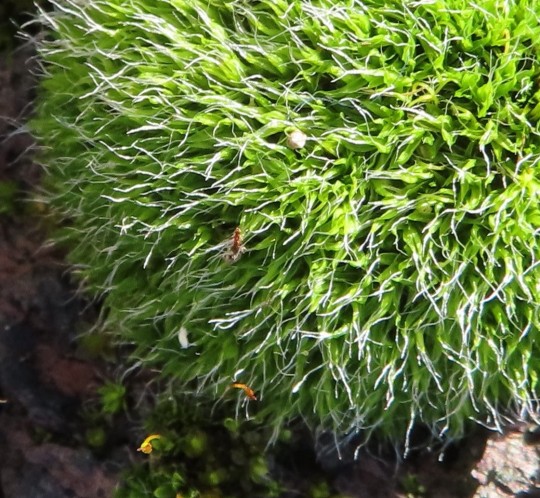
Bryophyta (moss)
Fresh water algae first ventured onto dry land maybe a billion years ago. 470 million years ago, the earliest true plants, mosses and liverworts, covered the earth's surface. Today there are over 12000 known species of moss and to be this successful they had to solve some fundamental problems - How do you avoid drying out? How do you reproduce? How do you obtain nutrients?
Some desert mosses can survive a hundred years without rain but give them a few drops of the wet stuff and they green up in a few days. Mosses reproduce with tiny spores carried by the wind for hundreds of miles. In comparison, green algae can't stray far from the river's edge. They require water to transport their spores.
These photos demonstrate another bryophyte super power. There is no soil under this moss, just a piece of volcanic lava. This moss secretes organic acids that dissolve rock thus freeing up those valuable nutrients. Imagine living happily on a bare rock requiring nothing but the occasional rain shower for survival. Now that's what I call a relaxing lifestyle!
123 notes
·
View notes
Text
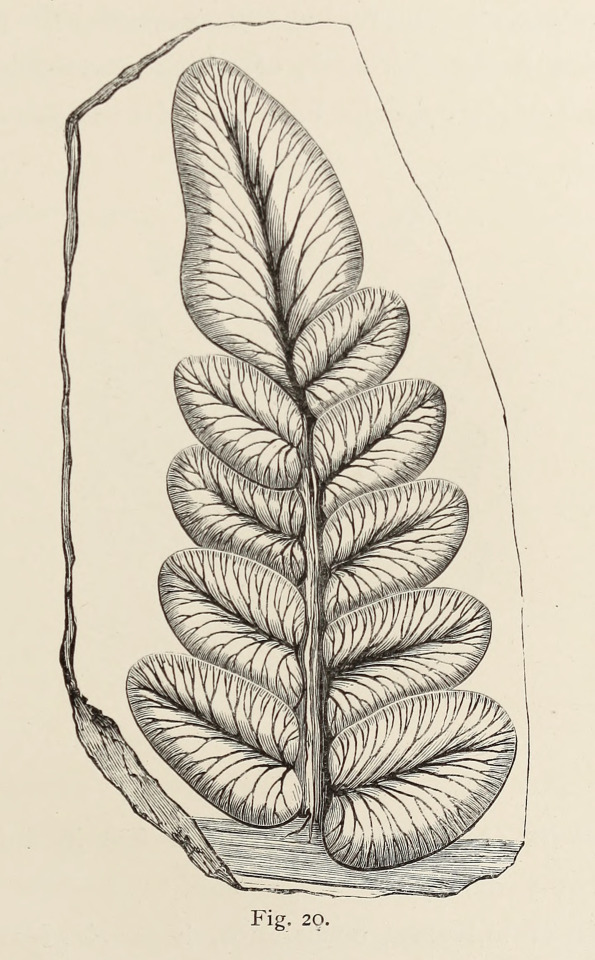
Neuropteris heterophylla, extinct seed fern. Art-studies from nature. 1872.
Internet Archive
120 notes
·
View notes
Text
in the first Jurassic Park movie, Dr. Ellie Sattler notices a plant on the island that was extinct (since the cretaceous period). the movie explained how they brought back dinosaurs from blood in mosquitoes that got fossilized in amber, but they never explained how they brought back an extinct plant. HOW TF DID THEY BRING BACK THE EXTINCT PLANTS IN JURASSIC PARK?
69 notes
·
View notes
Photo
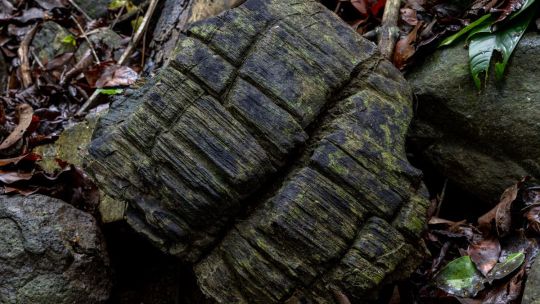
23 million-year-old petrified mangrove forest discovered hiding in plain sight in Panama | Live Science
... Whereas the canopies of most living mangrove trees reach around 43 feet (13 meters) high, S. barrocoloradoensis grew to around 82 feet (25 m) and could tower up to 130 feet (40 m).
The ancient trees likely evolved the same survival strategies mangroves use today, preferring brackish waters to highly saline ocean waters, Jaramillo said. The forest fringed a narrow peninsula that connected present-day central Panama to North America before the Isthmus of Panama formed, sometime between 23 million and 3 million years ago.
The mangrove fossils were all in a similar state of preservation, prompting the researchers to think the forest was wiped out by a single volcanic eruption that flooded the landscape with mud.
Since the researchers first discovered wood fossils on Barro Colorado Island, "people have been finding plenty more all over the island," Jaramillo said.
50 notes
·
View notes
Text
youtube
🇬🇧
Paleobotany provides impressive data on how plants had the power to alter environments and climate. In today's PBS Eons video (love them), we can see the relationship between plants, atmospheric gases, climate, and mass extinctions!
🇧🇷
A paleobotânica fornece dados impressionantes sobre como as plantas tinham o poder de alterar os ambientes e o clima. No vídeo da PBS Eons (adoro eles) que trago hoje, podemos ver a relação entre as plantas, gases atmosféricos, clima e extinções em massa!
#science#paleontology#geology#paleobotany#universe#biology#earth#digital painting#artwork#space#paleozóico#paleobotânica#paleozoic#paleontologia#paleoart#paleostream#paleoblr#paleomedia#palaeoart#palaeontology#pbs#pbs eons#environmental science#science communication#Youtube
27 notes
·
View notes
Text

Cyphe! My necromancer but only for plant creatures (she’s paleobotanist Baybe!). I have reskinned all summoning spells for this type of thing. Here is archaeopteris archaeopteryx the funniest common thread between paleontology and paleobotany I ever could have found by accident.
#Cyphe#cyphelium evernia minarum nephrite#earth genasi#paleobotany#necromancer#dnd character#plant creature#archaeopteris#progymnosperm#artists on tumblr#illustration#character design#art#concept art#dnd art#dnd#dnd character art#botany
104 notes
·
View notes
Text
Gingko Tree (Ginkgo biloba) wondering where all the Jurassic pollinators have gone vs. Avocado Tree (Persea americana) wondering where all the Pleistocene megafauna have gone
They’re also girlfriends
#gingko#ginkobiloba#ginkgo#avocado#trees#trees and forests#botany#paleontology#paleobotany#living tree#gardening#horticulture
147 notes
·
View notes
Text
currently absolutely enraptured learning about the k-t extinction event that killed the dinosaurs and sired in waves upon waves of ferns after the fungus started eating the dead biomass but I can only decipher this through what we know as human people published in papers one piece at a time over the past 30 years so I feel like I’m reading house of leaves like ergodic literature but at least in those cases the author knew what was going on. ahhhh the terror of the unknown and the desolation of many magnitudes and such haha
998 notes
·
View notes
Text
call my girl volcanic ash the way she be petrifying my wood
#petrification#petrified wood#fossils#paleobotany#paleoblr#palentology#i dont know how wood is petrified i just googled ans it is probably far more complexated
73 notes
·
View notes
Note
This ask is not about dinosaurs, actually... before the evolution of grasses during the Cenozoic, what could have been the equivalent of grass-like ecosystems (prairies, savanna...) during the Mesozoic?
F E R N PRAIRIES
seriously, there were lots of different kinds of prairies. fern, horsetail, cycad, the list goes on. Basically, different kinds of low-lying plants would do the prairie thing in ecosystems where forests couldn't get a foothold.
but, there were a lot fewer of them than today. because grasses are kind of OP, and have their own photosynthesis system, so they are able to grow and take over many places that would have been forests before grasses took over. That doesn't mean there weren't prairies, but there were just less. and a lot of things were more scrubland than prairie, too.
It's honestly amazing how much grass has changed the ecology of the planet. they are the biggest bioengineers of the cenozoic after people...
#grass!#palaeoblr#paleoecology#paleobotany#plants#fern prairies my beloved#I just need 1 (one) prehistoric planet scene on a fern prairie PLEASE
178 notes
·
View notes
Text
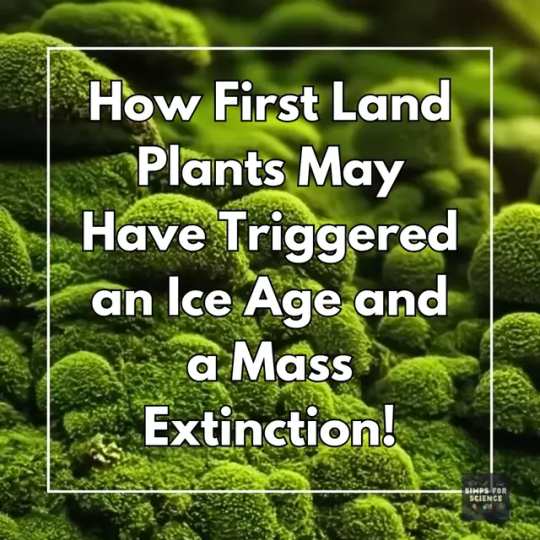


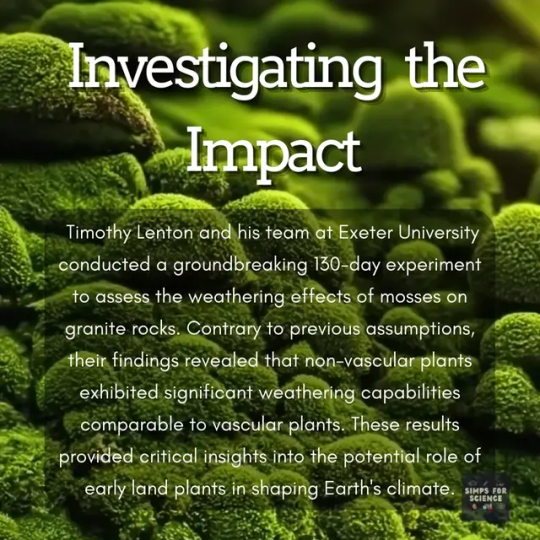
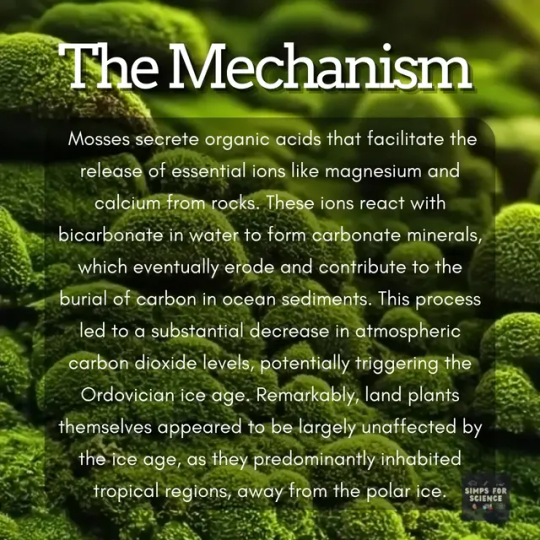

Tiny land pioneers 🌱 might have had a BIG impact on Earth's climate millions of years. Go through this post to learn more!
Image sources:
Background - Craiyon
Land plants - Marilylle Soveran/Flickr
#ordovician#evolution#paleo#paleobiology#paleoblr#paleobotany#botany#plantblr#plants#ice age#mass extinction#paleontology#carbon#carbon dioxide#geology#science#science facts#education#discover#study blog#studyblr#biology#biology student#biology facts#scicomm#explore#research scientist#earth#cool science#simps for science
15 notes
·
View notes
Photo
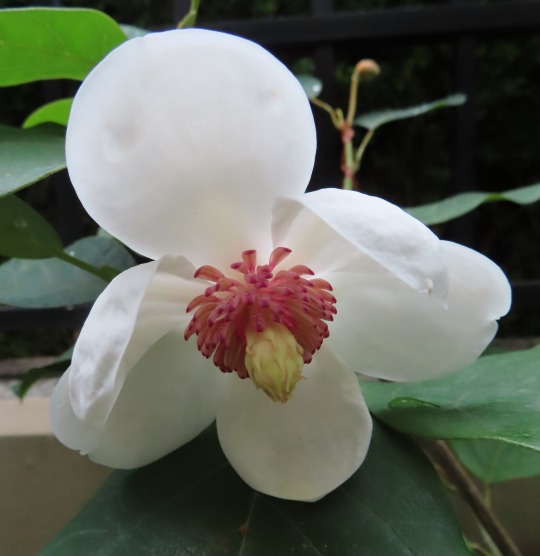

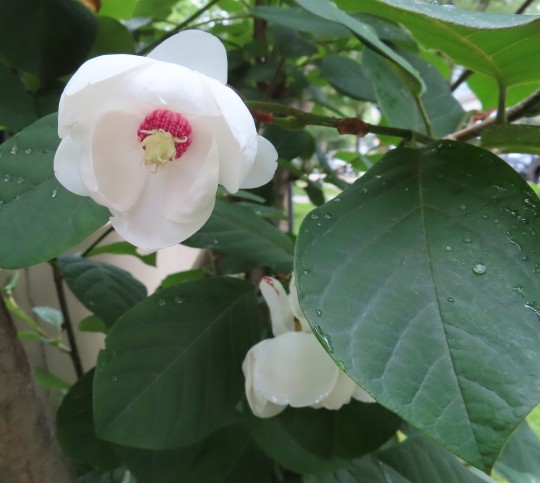
Magnolia sieboldii (Korean mountain magnolia)
Magnolias are among the most ancient of flowering plants and the first to use beetles and flies as their main pollinators. Although the first proven magnolia fossils are only 95 million years old, many believe the genus is much older than that. Beetles evolved around 300 million years ago (mya), flies 250 mya, moths and wasps 150 mya and modern bees and butterflies arrived about 100 mya. This timeline is important because it gives us clues to just how ancient magnolias are. Bees have much better color vision than beetles and that may be why the most primitive (extant) flowering plants have white petals.
Magnolias and other early angiosperms developed a number of innovations to attract insect pollinators. Foe example, they produce nectar and high-protein pollen. Using insects as a taxi service for pollination has some obvious advantages. Wind pollinated plants must produce enormous amounts of low-protein pollen on the off-chance that a few of them will be successful. Insect pollinated plants produce far less pollen and the energy savings can be put towards rapid growth and pretty flowers.
Incidentally, this particular species, Magnolia sieboldii, is the national flower of North Korea.
#flowers#photographers on tumblr#magnolia#pollination#paleobotany#fleurs#flores#fiori#blumen#bloemen#vancouver
141 notes
·
View notes